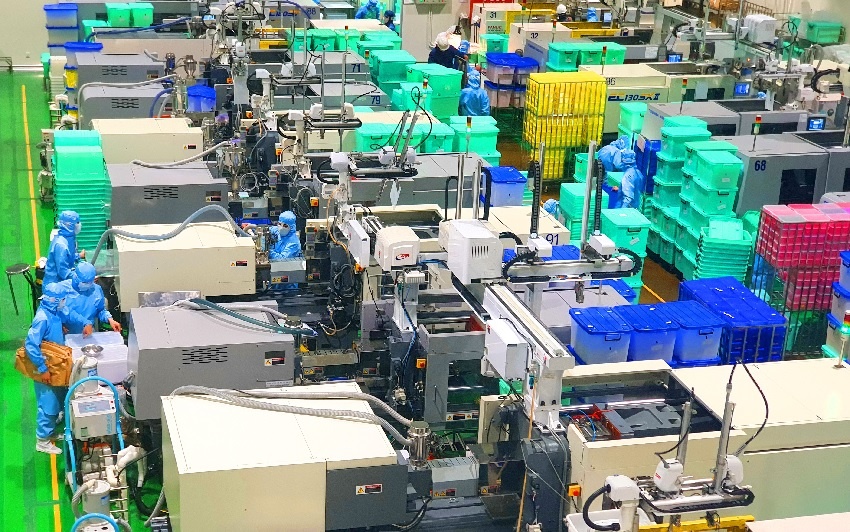Obvious risks continue to cloud foreign investment prospects for the second half
 |
| Obvious risks continue to cloud foreign investment prospects for the second half |
According to the World Investment Report 2022, launched this month by the United Nations Conference on Trade and Development (UNCTAD), the world’s foreign direct investment (FDI) recovered in 2021 and hit nearly $1.6 trillion, but this course is unlikely to be sustained in 2022.
This year, the business and investment climate has changed dramatically as the war in Ukraine is resulting in a triple crisis of high food, raised fuel prices, and tighter financing. Other factors clouding the FDI horizon include renewed pandemic impacts, the likelihood of more interest rate rises in major economies, negative sentiment in financial markets, and a potential recession, the report stated.
According to Nguyen Mai, chairman of the Vietnam Association of Foreign-Invested Enterprises, geopolitical tensions and policy changes in many nations worldwide will affect Vietnam’s efforts to attract FDI.
“Unless there is some breakthrough in FDI attraction in the second half of the year, FDI inflows to Vietnam in 2022 are estimated at $31-32 billion, and FDI disbursement is around $20 billion, the same as last year’s result,” Mai said in May. “Amid the competition of FDI attraction getting fierce, it is difficult for Vietnam to achieve its goals of quality and socioeconomic efficiency. However, it can at least reach the lowest target set forth in terms of quantity of FDI.”
Vietnam has set the highest target to lure in as much as $30-40 billion in registered foreign investment, including $20-30 billion in disbursement, but the improvement in quality is expected to be mild due to uncertainties affecting global investment flows.
This month, in addition to cutting down global growth projections to 2.9 per cent in 2022, the World Bank has emphasised that the Russia-Ukraine crisis has exacerbated the economic downturn and boosted the risk of stagnant inflation around the world. Besides that, the lockdowns of China and the interruption of production there have caused confusion for foreign investors.
Phan Huu Thang, former director of the Foreign Investment Agency (FIA) under the Ministry of Planning and Investment, said China’s pandemic policy has reduced the domestic consumption demand and this nation’s import and export turnover with the rest of the world. “Vietnam is affected to a certain extent. However, the impact of these factors is only for the short term,” said Thang.
Do Nhat Hoang, general director of the FIA, said there have been positive signals for Vietnam to attract FDI, such as Danish toymaker Lego to invest more than $1 billion on its first-ever carbon-neutral factory in the southern province of Binh Duong. The venture could generate 4,000 jobs over the next 15 years.
“Vietnam is gradually becoming a new manufacturing hub of the region, with the presence of many global groups including Samsung, Intel, LG, and Foxconn,” Hoang said.
In fact, in the World Investment Report 2022 by UNCTAD, Vietnam was also highlighted as a strong investment destination. “International project finance announcements in industrial real estate have also grown continuously for several years, with no let-up during the pandemic. In 2021, deal numbers tripled to 152 projects with a value of $135 billion. Large projects include the construction of a steel and cement manufacturing plant in India for $14 billion and the construction of a 960 -hectare pharmaceutical zone in Vietnam worth $10 billion,” the report stated.
The Politburo’s Resolution No.50-NQ/TW, enacted in 2019, provides the nation’s general orientation for completing institutions and policies and improving the quality and efficiency of foreign investment cooperation for this decade. Accordingly, registered capital shall be about $150-200 billion ($30-40 billion per year) in the period of 2021-2025; disbursed capital shall be about $100-150 billion ($20-30 billion per year) in the same period, and the localisation rate shall increase from the current 20-25 per cent to 30 per cent by 2025, and 40 per cent by 2030.
In the first half of the year, FDI flows into Vietnam were still lower than the same period last year. Specifically, the nation counted inflows of about $14 billion in the period, a slight decrease of 8.9 per cent on-year, and more than $10 billion was disbursed into the economy.
What the stars mean:
★ Poor ★ ★ Promising ★★★ Good ★★★★ Very good ★★★★★ Exceptional
Related Contents
Latest News
More News
- PM orders investment model for North–South high-speed rail (December 22, 2025 | 17:43)
- First members of Danang International Finance Centre revealed (December 22, 2025 | 17:39)
- Securing capital and efficiency for Vietnam’s 2026-2030 growth ambitions (December 17, 2025 | 10:00)
- Driving double-digit growth through green and circular transformation in Vietnam (December 17, 2025 | 09:00)
- Vietnam bucking trend in the global M&A landscape (December 16, 2025 | 14:20)
- Vietnam’s green transition demands collective financial action (December 15, 2025 | 12:00)
- VIR workshop highlights capital and policy for sustainable development (December 15, 2025 | 11:00)
- National Assembly approves pilot mechanisms to accelerate major projects in Hanoi (December 12, 2025 | 11:29)
- Vietnam eases policy approval requirements, simplifies foreign and outbound investments (December 11, 2025 | 17:53)
- Unpacking new momentum in Vietnam’s M&A market (December 10, 2025 | 09:59)

 Tag:
Tag:


















 Mobile Version
Mobile Version